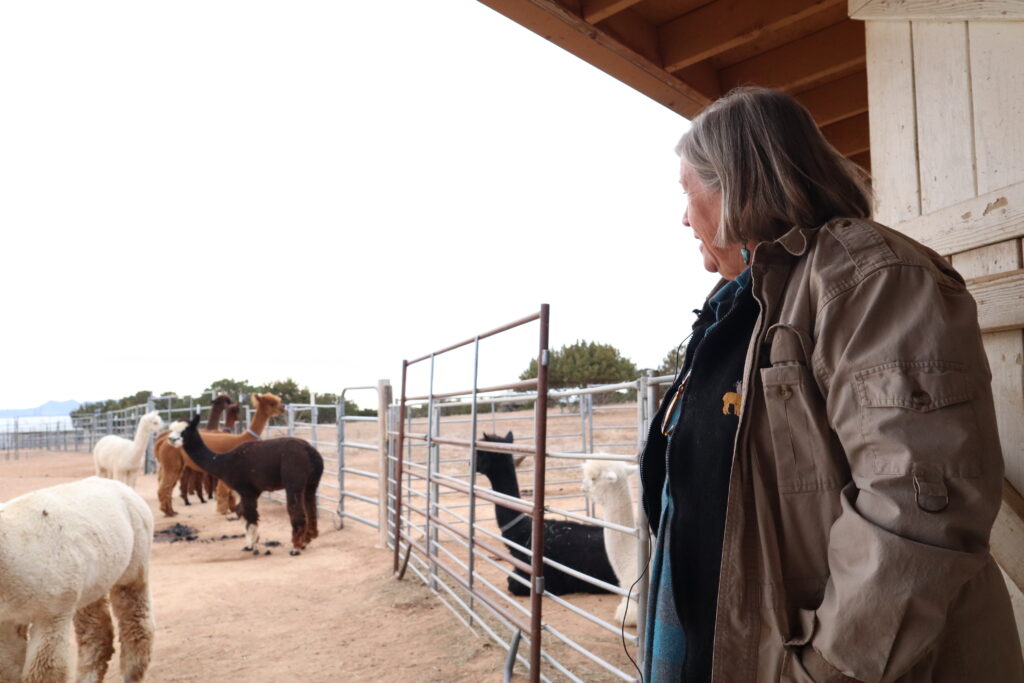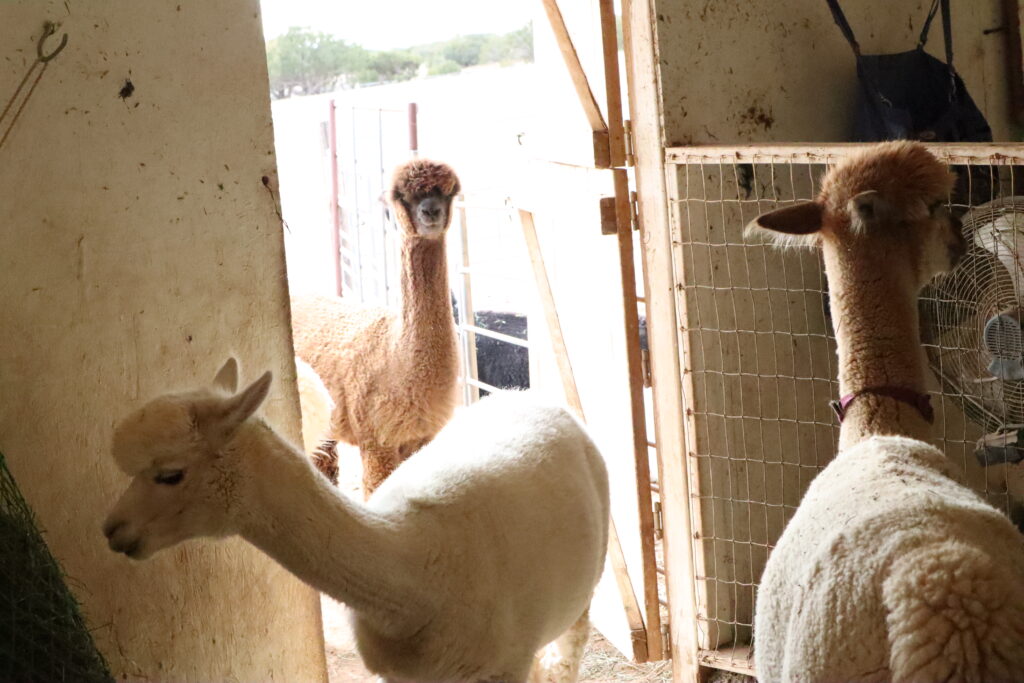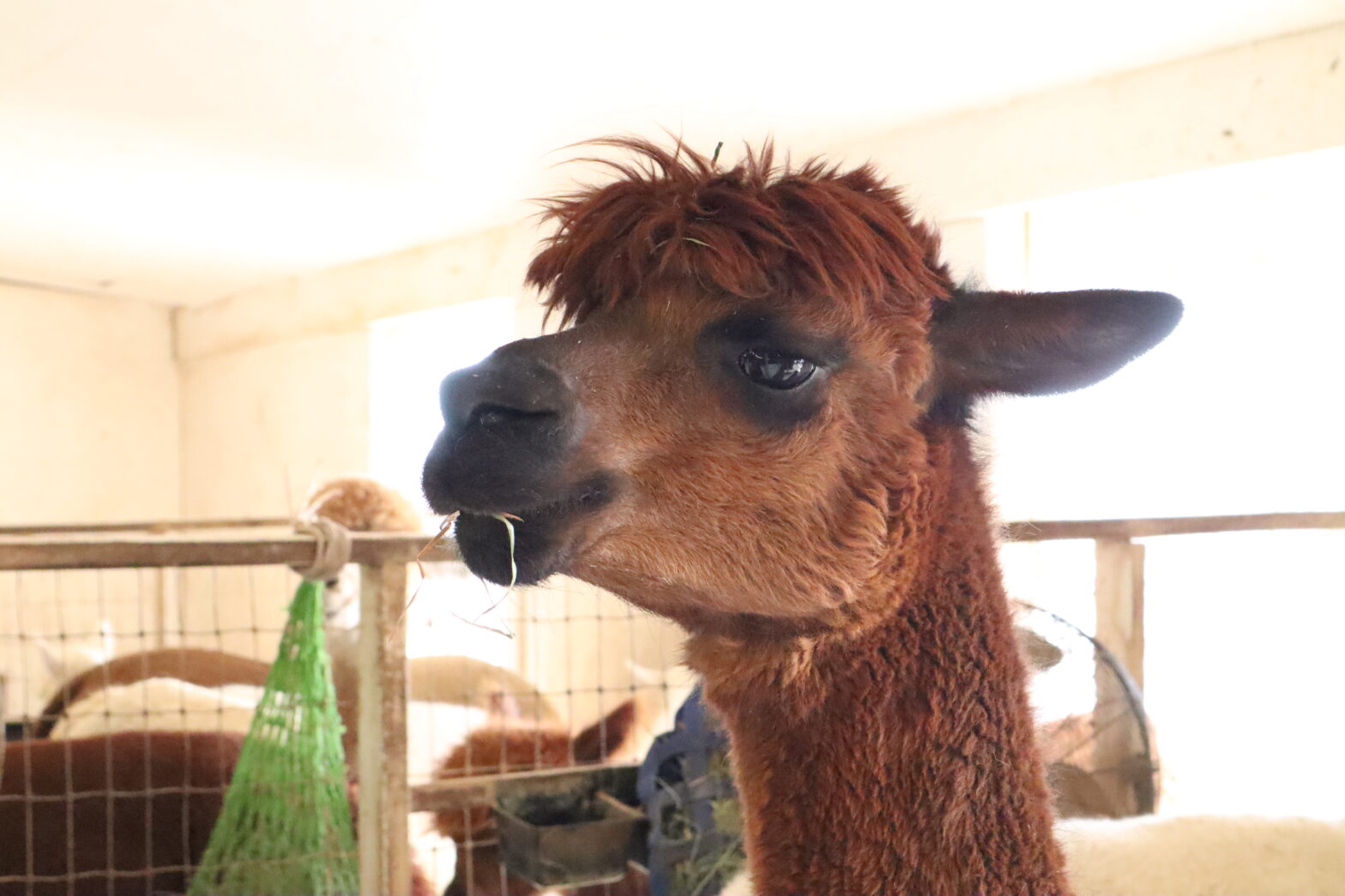On a cold and windy afternoon just outside of Santa Fe, Anne Stallcup, owner of Que Sera Alpacas walks the grounds of her alpaca farm, greeting each animal by name and dutifully giving kisses to the ones who put their furry faces up to hers.
Stallcup, a Santa Fe native, has been raising alpacas since 2003, and sells yarn and clothes made from their fleece in her shop, at craft markets and online.
Alpacas thrive in New Mexico because the state’s high altitude is similar to that of their native habitat in the mountains of western South America.
Those who raise them appreciate their calm, gentle nature and their marketable fleece, which is softer and warmer than wool. Alpacas are often recommended as easy livestock animals to raise for farmers with no prior experience.
Alpaca farming has many advantages over more traditional livestock animals, Stallcup says, especially in New Mexico.

They do well in arid, high-altitude climates, but they’re also a more sustainable animal to raise.
“They’re easy on the land, their feet are soft… they don’t over-graze,” she says.
Soft feet? Turns out, when alpacas graze, they snip off the grass instead of pulling it out, so they don’t damage or destroy root systems, preserving delicate grasslands. That’s according to a sustainability study conducted by the Council of Fashion Designers of America (CFDA).
Not only do alpacas graze efficiently, they also consume very little water, an important feature in the high desert.
Alpacas are technically camelids, meaning they are closely related to llamas and camels, which require less water than horses or cattle.
Alpaca are significantly
kinder to the environment
than sheep or goats
And clothing made from alpaca fleece clothing offers unique benefits that other natural fibers do not.
The primary advantage is that alpaca wool is exceptionally soft, often being compared to cashmere in terms of softness and comfort.
“I’m allergic to wool, but I can wear alpaca,” Stallcup says. “It’s not scratchy like wool is sometimes.”
This is because like fine merino wool, alpaca fibers are very thin and lack the scales of coarser wool.
And unlike wool, alpaca yarn doesn’t contain the natural waxy compound lanolin, a common irritant for people with sensitive skin or skin conditions.
It’s also warmer than wool, in part because of the structure of the alpaca fibers. They are naturally crimped, increasing surface area, and they have a hollow core that holds in heat without weight.
“It’s lighter in weight compared to wool, but warmer,” Stallcup says, also noting that since alpaca wool is both light and insulating, it makes an ideal yarn for winter hats, scarves and mittens.

Stallcup has found solace in spinning her own alpaca yarn. “Spinning is very relaxing. It’s very zen,” she says.
While Stallcup sends most of her fleece to a mill for processing, she still dyes and spins some on her own yarn as a hobby.
Raising alpacas and processing their fleece has given Stallcup and Que Sera’s foreman, Christian Valle, an opportunity to decompress and relax while at work. “They pick up on your mood,” he says. “They cheer me up.”
People close tho them say the have a level of compassion that makes alpaca farming a healing and calming experience. Some alpacas are even used as emotional support animals.
And owners can develop a close relationship with the animals, which Stallcup says can be surprisingly emotionally intelligent. “If you’re down, they’re very sweet,” she says. “They sort of come over and say ‘What’s wrong, can we give you a hug?’ They’re wonderful creatures.”
